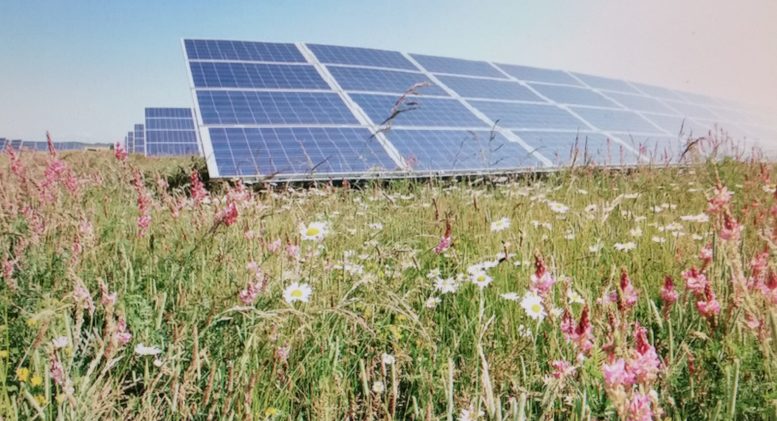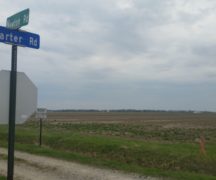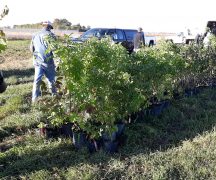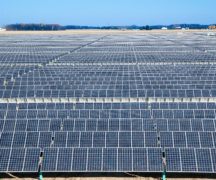By JAN LARSON McLAUGHLIN
BG Independent News
Bowling Green officials learned Monday evening how its solar field could be turned into a “solar sanctuary” for butterflies, bees and birds.
The board of public utilities heard how the U.S. Fish & Wildlife Service hopes to develop a wildlife and pollinator habitat around the 165-acre solar field near the corner of Newton and Carter roads, northeast of Bowling Green.
“You are producing good clean energy, and you’re helping wildlife at the same time,” said Marci Lininger, of the U.S. Fish & Wildlife Service
“This is a really cool project for us,” Lininger said.
One goal of the wildlife habitat area is to bring back pollinators to the region.
“Pollinators are in decline right now,” she said. Adult Monarch butterflies have seen a 50 percent drop in the last 10 years due to disappearing milkweed plants – which are the only plants used by Monarchs for laying eggs.
Some wildflower habitats target specific species. The one at Bowling Green’s solar site will be aimed at attracting several species of bees, birds and butterflies. The plan calls for three seasons of blooming plants.
The 12-acre wild habitat area is intended to benefit various pollinators, crops, soil quality, water quality, foraging birds and Monarchs.
Ohio is a priority location for Monarchs on their annual trek to Mexico. “We have a huge responsibility here in Ohio,” Lininger said.
This region also has many crops that are suffering from inadequate pollination, she said. Crops relying on pollination include tomatoes, blueberries, melons, soybeans, peppers, peaches, cucumbers, squash and apples.
Honey bees account for more than $15 billion in agricultural production of fruits, vegetables and nuts, Lininger said.
Water and soil quality are also helped by the wildflower habitats because the native plants have deeper root systems and add nitrogen to the soil. The plants also attract insects, which are a food staple for many birds, and provide bird nesting areas in tall grasses.
The wildlife habitat will be a team project of the U.S. Fish & Wildlife Service, the City of Bowling Green, Next Era Energy, American Municipal Power, and Bowling Green State University. It is also hoped that the Wood County Park District will join in the project, so it can maintain the site and use is as part of its educational programming. There is to be no expense for the city, according to Brian O’Connell, director of the city public utilities department.
By planting wildflowers, the city will also cut back on its mowing expenses at the site. The project is currently limited to 12 acres to the north and south of the solar field, but it is possible that Next Era will allow wildflowers to also be planted in between the rows of solar panels.
“We’re looking forward to the project and looking forward to getting going,” O’Connell said. “It’s a win-win for everybody.”
The U.S. Fish and Wildlife Service officials hope to plant the site in 2018, “then let Mother Nature take over,” O’Connell said.
The “solar sanctuary” plan still needs approval from City Council.
In other business at Monday’s meeting, the board of public utilities agreed to transfer 3.1 acres of property in the Bellard Business Park to the Bowling Green Community Development Foundation. The land is the last open property in the southwest corner of the business park, at the intersection of Newton and Brim roads.
Snyder Financial Services plans to purchase the parcel to construct a building with three office spaces. One office would be occupied by Snyder services, with the other two offices to be leased.




